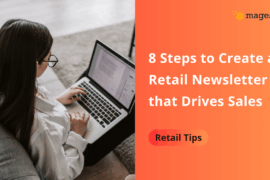For decades now, technology has continued to grow exponentially. With it has come Silicon Valley, the Internet of Things, and a whole generation of consumers that have only ever known life with a smart phone. How are electronics businesses across the supply chain adapting, and will it be enough? Today, we will talk you through 7 E-Commerce Tips for Electronics Supply Chain.
Electronics Supply Chain Challenges
Everyone admits that developments in technology are great for business. After all, who doesn’t want higher demand for their products? However, increasing demand brings with it a number of challenges that affect every part of the supply chain — from parts and product manufacturers to suppliers and retailers. You must answer these questions.
- How do you manage an increasingly complex electronics product assortment?
- What’s the best way to keep up with product-related trends and a continuously evolving product assortment and lifecycle?
- Is there a more efficient way to optimize inventory management and increase accessibility and transparency for customers?
We’re pulling together a decade of experience in supporting businesses across the supply chain to answer these questions for you.
7 E-Commerce Tips for Electronics Supply Chain
Tip 1: Leverage the ERP
Choosing software that integrates directly with your ERP (e.g. SAP, Microsoft Dynamics, or Magento ERP) allows you to get even more out of the logic and data you already have. It also means there’s no need to duplicate it or synchronize information in your web store environment, for example. Not only does this keep your product information consistent, it means that any changes you make in your ERP are updated in your web store in real time.
There are a wide range of options to look at when it comes to moving away from siloed software solutions toward integrated business systems. You might also consider integrating your PIM system with your web store and ERP. For more information on this topic, check out our article When Should You Enrich Your EPR With a PIM System.
Tip 2: Display related products
This may seem simple, but displaying related products drastically streamlines the shopping process for your customers. Will someone who buys a specific motherboard usually need a particular tool or part to go with it? You can set up the relationship in your ERP and make sure it’s easy for your customer to find (and order) what they need.
Also, for your blog, displaying related posts is a must to keep your audiences reading. I’ve set up a good example of this for my customer’s air purifier blog.
Promotions: Follow best air purifiers for bedroom to help you with your sleep.
Tip 3: personalized catalogs
Not all of your customers will need to access to your full range of products. Especially if you’re a manufacturer or supplier, it’s smart to set up personalized catalogs for different clientele. By limiting their options, you make it easier for your customer to hone in on what they’re looking for. This also makes it easier for your sales team to offer relevant product assortments to clients.
Tip 4: Take a data-driven approach to purchasing decisions
Using Google Analytics is a great way to monitor the success of your products and predict upcoming trends so you can better adapt to consumer demand. Sign up for our free e-commerce course to gain access to a unique guide on using Google Analytics and Google Tag Manager.
Of course, Google Analytics isn’t the only way to take a data-driven approach to your purchasing decisions. You can use Heap Analytics, Hotjar… It’s important to take a close look at your current purchasing process. What are you basing your decisions on? Do you have all the insights you need to make good decisions? If you’re not already having this conversation with your purchasing department, bring up these important questions! Then go to your e-commerce provider to find out how they can help you get the information you need.
Tip 5: real-time information
Providing true real-time information in your web store is one of the best ways you (and your customers) can keep up with a fluctuating product assortment.
When you have a constant stream of products coming and going (and changing), it’s a challenge to keep up with everything in one system. Let alone in multiple systems. We already suggested that you integrate your ERP with your web store in order to better manage a complex product assortment. This solution will also help you keep your online catalog up to date in real time.
When your web store is integrated with your ERP, you can count on your stock levels, pricing and product information to be updated in your web store the moment you make any changes in your ERP.
Tip 6: 24/7 online CUstomer service
If you’re not online yet, you should be. Whatever’s holding you back is likely not worth the sales and communication you’re missing out because you don’t have people available to take calls and orders around the clock. We really can’t stress this point enough: you need to be where your customers are, and your customers are online.
Tip 7: Offer buyers the option to place repeat orders based on a template
Letting your return customers create order templates based on past purchases is a big win for accessibility. It also gives you more insight to future orders so you can ensure you always have the right items in stock for your return customers.



